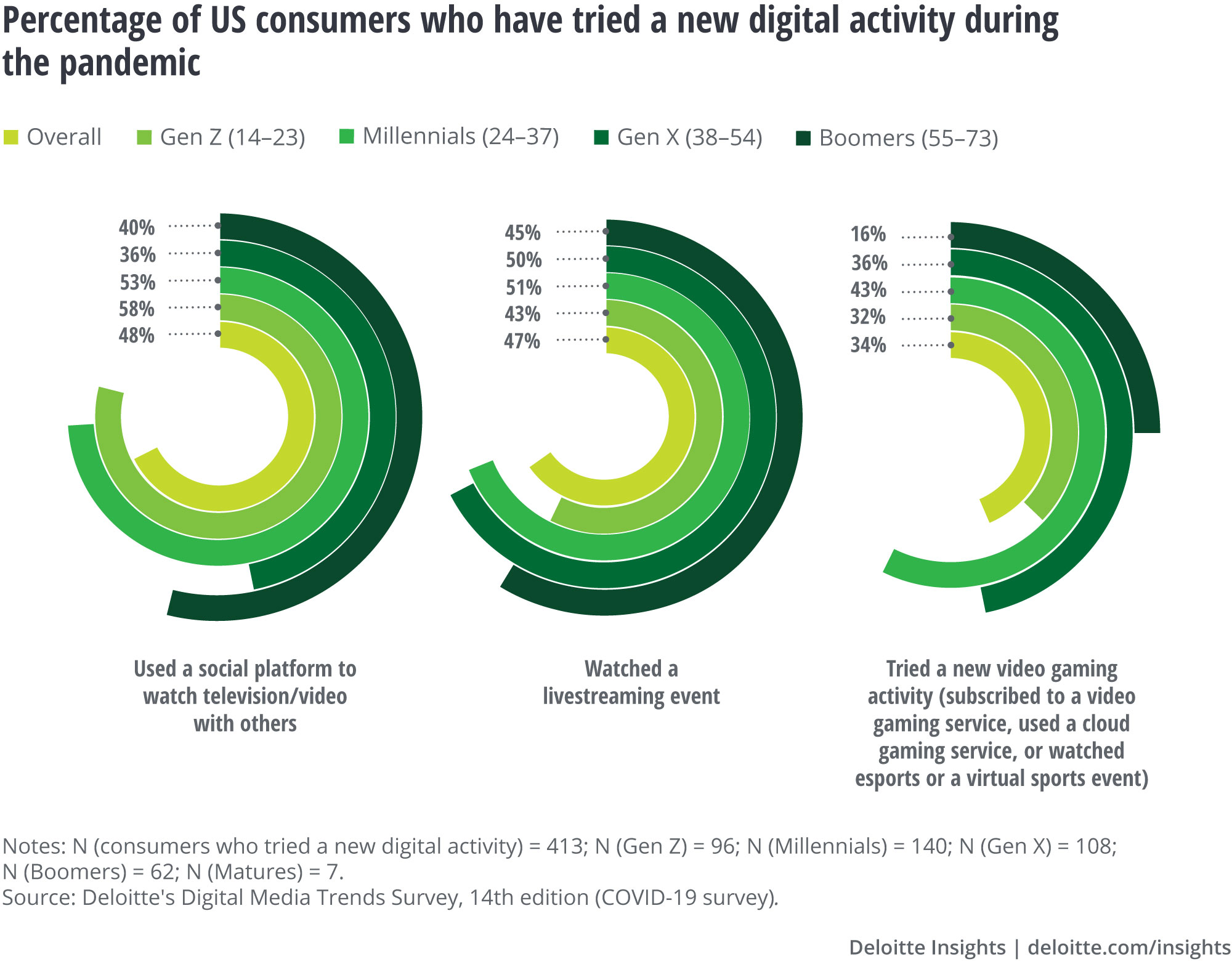Will gaming keep growing when the lockdowns end? Video game industry trends during the COVID-19 pandemic
3 minute read
08 July 2020
Locked down at home, more people are playing video games than ever. Can companies convert casual gamers into long-term customers?

For many people, COVID-19 lockdowns quickly increased the number of hours spent in front of screens—and inspired millions to try new digital activities. Deloitte’s 2020 digital media trends survey found that, during the crisis, a third of consumers have, for the first time, subscribed to a video gaming service, used a cloud gaming service, or watched esports or a virtual sporting event.1 With school and office closures, work furloughs, and canceled travel plans, more people are playing video games—and more are upgrading their gaming relationships from casual to committed. But once people resume venturing out of doors, will providers be able to keep players engaged?
Learn more
Explore the Thinking Fast series library
Subscribe and never miss a charticle
Learn about Deloitte’s services
Go straight to smart. Get the Deloitte Insights app
For game studios and publishers, console makers, and gaming service providers—as well as the top video platforms supporting gaming content and livestreaming—the moment is ideal to convert more casual gamers into long-term customers.
From simple mobile games to immersive multiplayer experiences, video gaming has been growing in popularity in recent years.2 Even before COVID-19, Deloitte’s survey found a quarter of consumers ranking playing video games as one of their three favorite entertainment activities. This trend toward interactive—and often social—entertainment is most pronounced in younger generations, many of whom have grown up online and playing video games. Around 40% of Millennials and Gen Z listed playing video games in their top three.3
During the COVID-19 crisis, more people have been home with free time, families have been playing games across generations, and in-person live entertainment is on hold.4 When people begin returning to school and work schedules, will video games maintain their share of entertainment time?
There’s a chance that around a third of consumers might. A first-time subscriber to a new video gaming service, such as those supporting top gaming consoles and all-you-can eat mobile gaming, can get access to new releases and a back catalog of games. The trend toward gaming subscriptions follows the success of streaming video services and has been credited with driving growth for top game titles.5
For cloud gaming services, the market is still young. Gaining subscribers during the crisis gives them a chance to show their value and potentially anchor more top game titles. With live sports mostly on hold and esports already reaching new levels of popularity, more people are watching others play and comment on video games.6 Whether they’re checking out league contests for top esports titles or swapping live physical sports for virtualized versions, first-time viewers seem to be becoming more engaged with the world of video gaming.
Implications for executives
The COVID-19 crisis has accelerated customer acquisition and engagement for video gaming services and experiences, but retention may face challenges as people return to schools and workplaces. Meaningful touchpoints, incentives, and experiences may go a long way in keeping these new users engaged. A better understanding of customers is the right place to start.
- Do providers know who these new users are and which games they’re playing most?
- Can they target them with offers to keep them engaged once the crisis is over?
- How can they leverage cross-promotions with relevant brands and celebrities, across multiple channels, to reach audiences that may spend more time on social platforms than cable TV?
- How can they collaborate with sports and live entertainment to reinforce both industries, virtually and physically?
The COVID-19 crisis has been profoundly impactful. As people turn to more entertainment options to fill time and seek comfort, providers should not take momentary gains for granted—they should continue working to deliver greater and more personalized value.
Explore the Thinking Fast series
-
How streaming is changing the music industry Article4 years ago
-
Can tech companies reach older consumers during the pandemic? Article4 years ago
-
Closing the tech conference gender gap Article4 years ago
-
Why organizations are moving to the cloud Article4 years ago
-
The satellite broadband industry is moving at hyperspeed Article4 years ago
-
The changing face of North America’s tech ecosystem Article4 years ago












